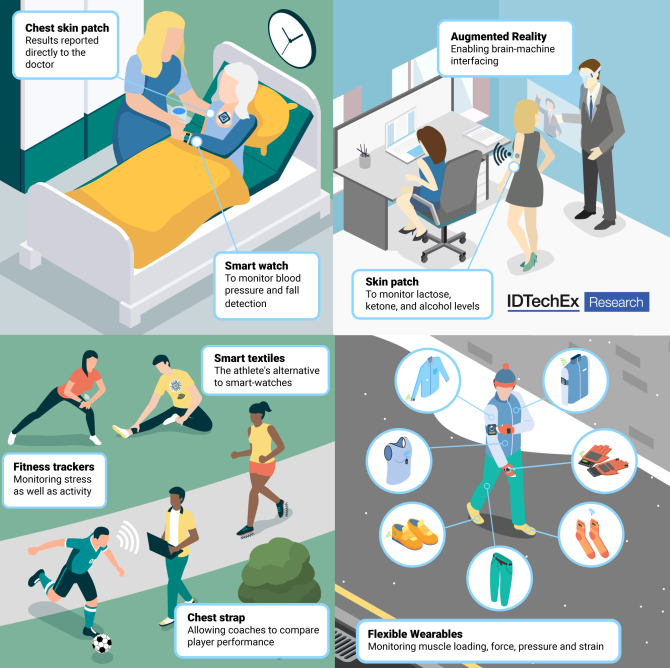
Market for wearable sensors is expanding
By Tess Skyrme, Technology Analyst, IDTechEx , Cambridge, UK
Electronics Engineering Wearable Technology sensors wearableInnovations are pushing the envelope of biometrics accessible through watches & skin patches
More people than ever before are turning to wearable sensors to monitor their activity levels. However, despite its origin in simple step counting, the market for wearable sensors is expanding into the more complex arena of health monitoring. Innovations in wearable sensor technology are expanding the envelope of biometrics accessible through watches and skin patches.
This not only seeks to address the growing demand for remote patient monitoring and decentralized clinical trials but also the rising expectations of the general consumer. This includes easier access to health data but extends further to sensor integration into headsets and accessories for immersive experiences in the metaverse. Not all wearable sensor technology is made equal and distinguishing between hype and reality is an increasing challenge for stakeholders.
Motion sensors
Motion sensing hardware is well established, with accelerometers integrated into almost every wearable. Therefore, as profit margins for manufacturers diminish with commoditization, expanding the application space is crucial to maintain growth.

Source: IDTechEx – “Wearable Sensors 2023-2033”
Emerging use cases include health insurance rewards, clinical trials, and professional athlete monitoring. Key MEMs manufacturers are battling semiconductor shortages and regulatory approval to maximize entry into these sectors.
Optical sensors go further
Smart-watch wearers are familiar with the red and green lights on the back of their devices, used to obtain heart-rate data or blood oxygen and further analyzed for insights into calorie burn, VO2 max, and sleep quality.
Sensor developers are interested in pushing the boundaries of what can be measured non-invasively with light – whether it be through new software to analyze photoplethysmography (PPG) signals or new hardware for spectroscopy. Multiple companies are competing to lead in the commercialization of wearable blood pressure, with others setting their sights on ambitious ‘clinic on the wrist’ devices to replace common hospital tests and even glucose monitoring.
Electrodes enable monitoring
Incorporating conductive materials into wearable technology is a simple concept. However, it has led to a vast variety of wearables sensors including wet electrodes stuck on the skin to measure the heart, dry electrodes in headphones to analyze brain signals, and microneedles within skin patches to quantify muscle movements. As such, this also creates a broad application space for electrodes ranging from vital sign monitoring and sleep analysis for healthcare to emotional response and stress monitoring for marketing and productivity.
Chemical sensors
Chemical sensors are increasingly enabling diabetics to monitor their glucose levels without finger pricks. However, commercial devices still require a needle to be inserted below the surface of the skin. As such, the quest for less invasive wearable sensors continues. An overview of the existing market for continuous glucose marketing (CGM) is provided in the latest report, followed by an analysis of competitor technologies using microneedles and other bodily fluids. This is followed by a dedicated chapter on novel biometrics, assessing the opportunity for chemical sensor developers outside of the diabetes management space – with a focus on hydration, alcohol, and lactate.

Tess Skyrme, Technology Analyst, IDTechEx , Cambridge, UK
